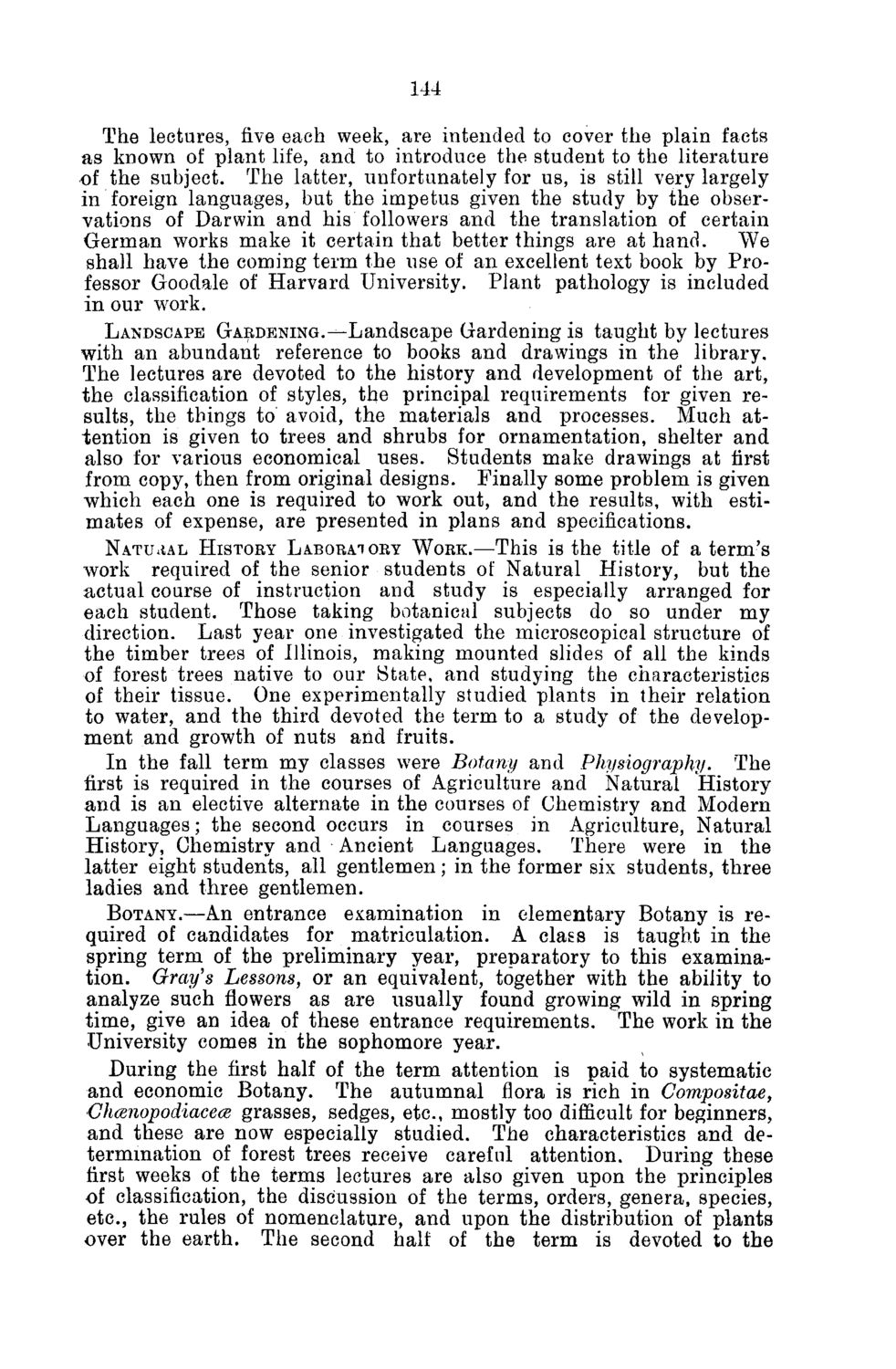| |
| |
Caption: Board of Trustees Minutes - 1886
This is a reduced-resolution page image for fast online browsing.

EXTRACTED TEXT FROM PAGE:
144 The lectures, five each week, are intended to cover the plain facts as known of plant life, and to introduce the student to the literature of the subject. The latter, unfortunately for us, is still very largely in foreign languages, but the impetus given the study by the observations of Darwin and his followers and the translation of certain German works make it certain that better things are at hand. We shall have the coming term the use of an excellent text book by Professor Goodale of Harvard University. Plant pathology is included in our work. LANDSCAPE GARDENING.— Landscape Gardening is taught by lectures with an abundant reference to books and drawings in the library. The lectures are devoted to the history and development of the art, the classification of styles, the principal requirements for given results, the things to avoid, the materials and processes. Much attention is given to trees and shrubs for ornamentation, shelter and also for various economical uses. Students make drawings at first from copy, then from original designs. Finally some problem is given which each one is required to work out, and the results, with estimates of expense, are presented in plans and specifications. NATURAL HISTORY LABORATORY WORK.—This is the title of a term's work required of the senior students of Natural History, but the actual course of instruction and study is especially arranged for each student. Those taking botanical subjects do so under my direction. Last year one investigated the microscopical structure of the timber trees of Illinois, making mounted slides of all the kinds of forest trees native to our State, and studying the characteristics of their tissue. One experimentally studied plants in their relation to water, and the third devoted the term to a study of the development and growth of nuts arid fruits. In the fall term my classes were Botany and Physiography. The first is required in the courses of Agriculture and Natural History and is an elective alternate in the courses of Chemistry and Modern Languages; the second occurs in courses in Agriculture, Natural History, Chemistry and Ancient Languages. There were in the latter eight students, all gentlemen; in the former six students, three ladies and three gentlemen. BOTANY.—An entrance examination in elementary Botany is required of candidates for matriculation. A class is taught in the spring term of the preliminary year, preparatory to this examination. Gray's Lessons, or an equivalent, together with the ability to analyze such flowers as are usually found growing wild in spring time, give an idea of these entrance requirements. The work in the University comes in the sophomore year. During the first half of the term attention is paid to systematic and economic Botany. The autumnal flora is rich in Compositae, Chcenopodiacece grasses, sedges, etc., mostly too difficult for beginners, and these are now especially studied. The characteristics and determination of forest trees receive careful attention. During these first weeks of the terms lectures are also given upon the principles of classification, the discussion of the terms, orders, genera, species, etc., the rules of nomenclature, and upon the distribution of plants over the earth. The second half of the term is devoted to the
| |